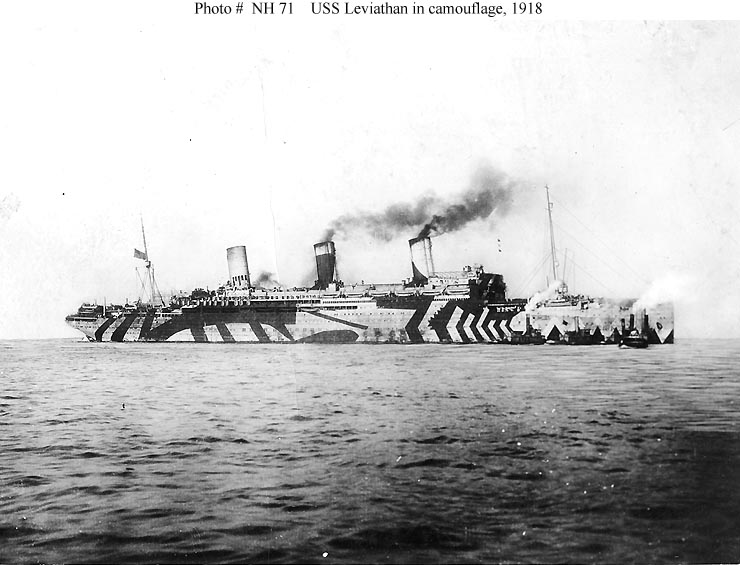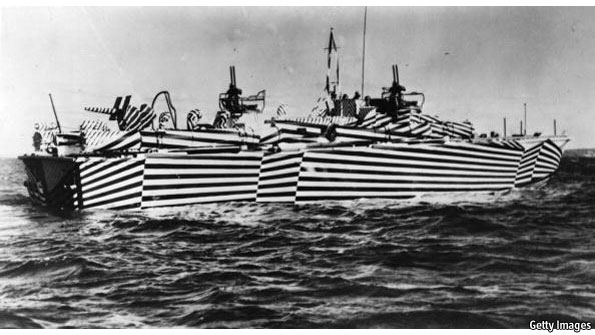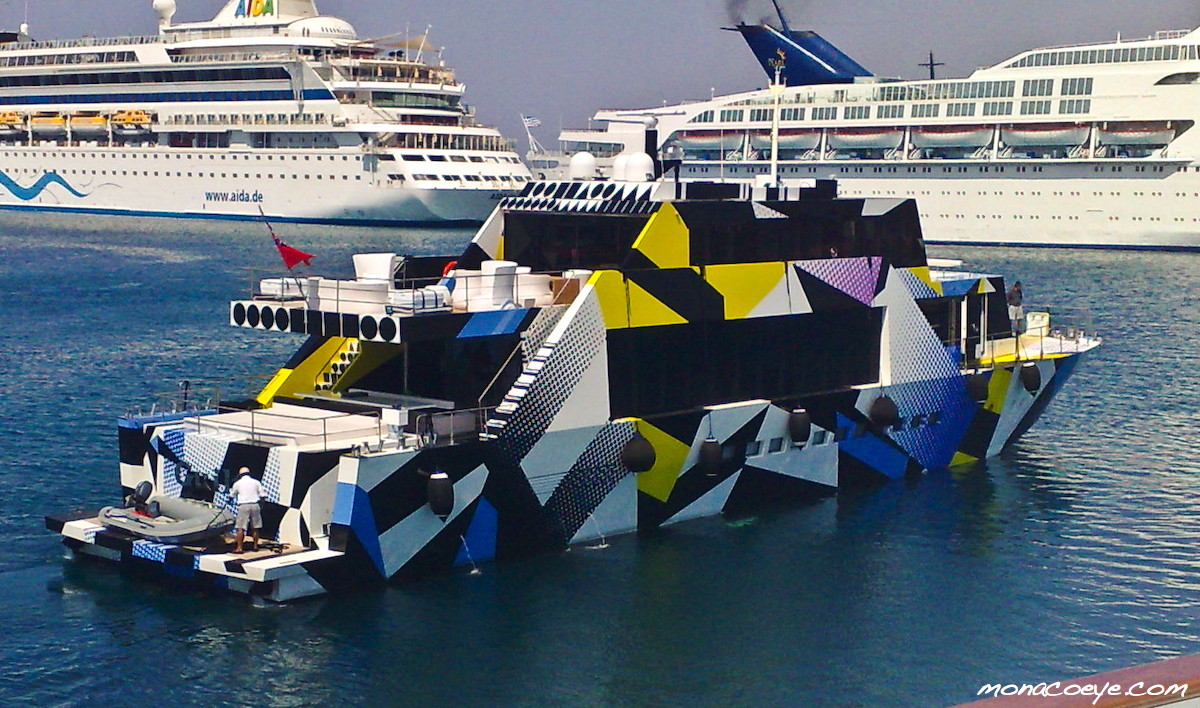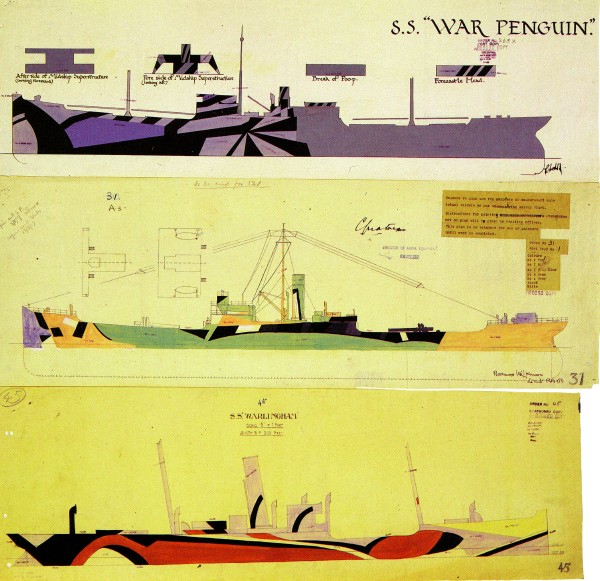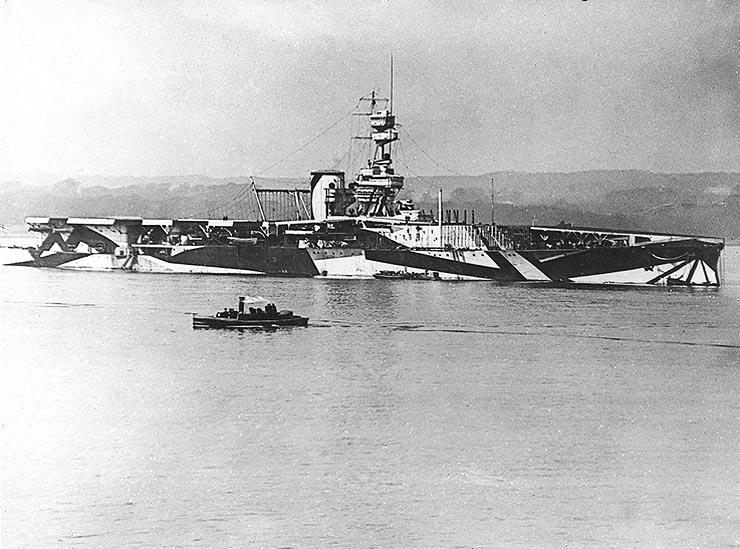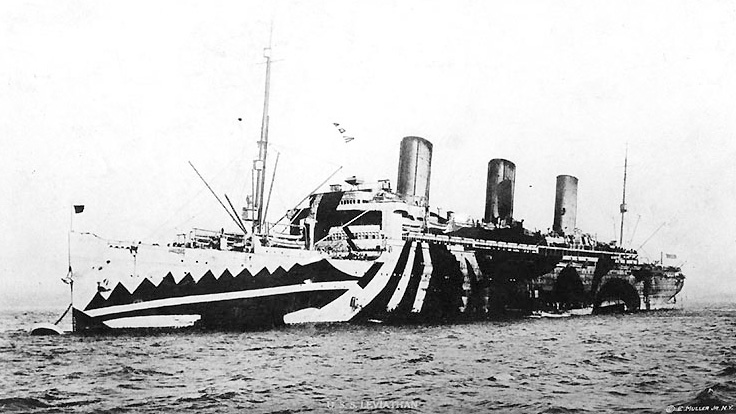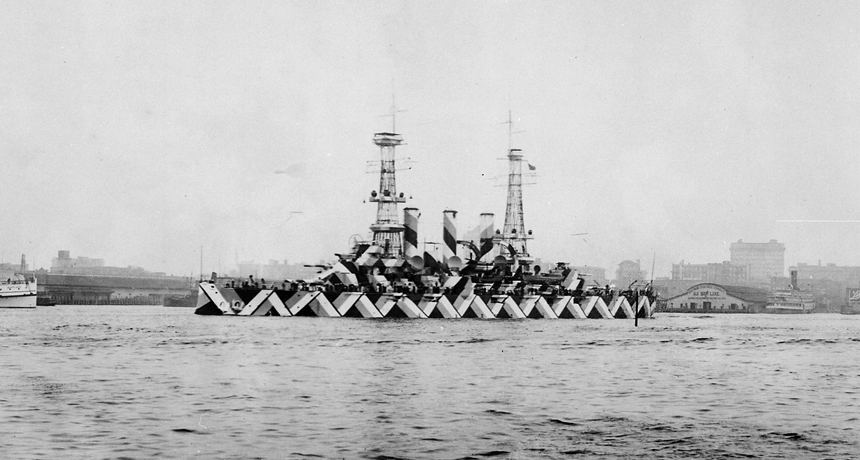Dazzle camouflage (also known as Razzle Dazzle or Dazzle painting) was a military camouflage paint scheme used on ships, extensively during World War I and to a lesser extent in World War II. The idea is credited to the artist Norman Wilkinson who was serving in the Royal Naval Volunteer Reserve when he had the idea in 1917. After the Allied Navies failed to develop effective means to disguise ships in all weathers, the dazzle technique was employed, not in order to conceal the ship, but rather to make it difficult for the enemy to estimate its type, size, speed and direction of travel. After seeing a canon painted in dazzle camouflage trundling through the streets of Paris, Picasso is reported to have taken credit for the innovation which seemed to him a quintessentially Cubist technique.
Picasso claimed it to be a product of Cubist influence. Others attributed it as a play on the abstract chaos of Italian Futurist art. Vorticists from Britain, on the other hand, actually participated in the concept’s development, with movement artists such as Edward Wadsworth contributing some 2,000-odd designs for ship patterns.
Regardless of its roots, dazzle camouflage is arguably one of the most strikingly aesthetic tools of war ever employed. Shapes and stripes decorated along the outer surfaces of merchant and war vessels were intended to confuse enemy submarines of a “dazzle ship’s” exact nautical position. Beautiful, stunning, and, in practice, terrifying, it was a rare occurrence where art was the technology and war became a medium.
Whether or not the methodology actually worked was, at the time, indeterminable. Research reveals its incorporation in theaters of marine warfare was spurred by faith and desperation, and despite its prominence in allied tactics during the first and second world wars, there was never a solid way to qualify its effectiveness.
Jeff Koons actually based this design on the Dazzle Painting, or Razzle Dazzle as the Americans called it, for Dakis Joannou yacht.

